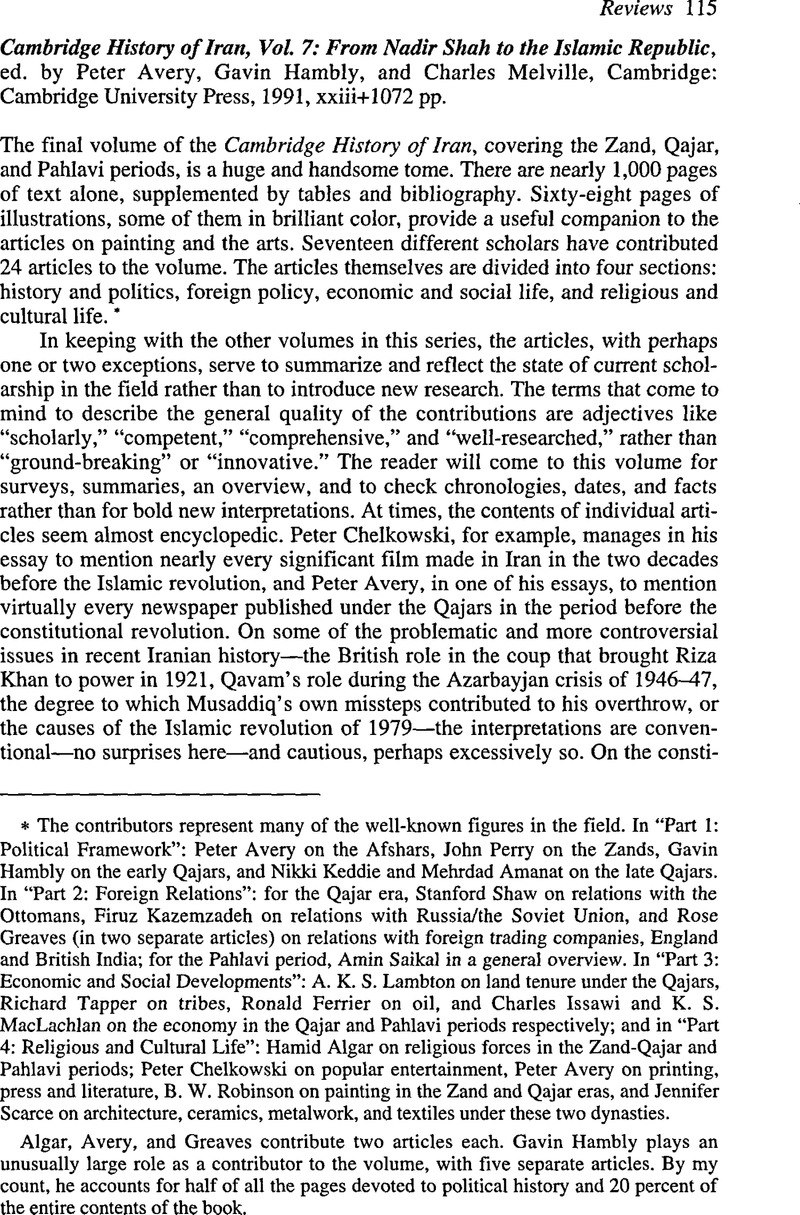No CrossRef data available.
Cambridge History of Iran, Vol. 7: From Nadir Shah to the Islamic Republic, ed. by Peter Avery, Gavin Hambly, and Charles Melville, Cambridge: Cambridge University Press, 1991, xxiii+1072 pp.
Review products
Published online by Cambridge University Press: 01 January 2022
Abstract

- Type
- Reviews
- Information
- Copyright
- Copyright © Association For Iranian Studies, Inc 1999
Footnotes
The contributors represent many of the well-known figures in the field. In “Part 1: Political Framework”: Peter Avery on the Afshars, John Perry on the Zands, Gavin Hambly on the early Qajars, and Nikki Keddie and Mehrdad Amanat on the late Qajars. In “Part 2: Foreign Relations”: for the Qajar era, Stanford Shaw on relations with the Ottomans, Firuz Kazemzadeh on relations with Russia/the Soviet Union, and Rose Greaves (in two separate articles) on relations with foreign trading companies, England and British India; for the Pahlavi period, Amin Saikal in a general overview. In “Part 3: Economic and Social Developments”: A. K. S. Lambton on land tenure under the Qajars, Richard Tapper on tribes, Ronald Ferrier on oil, and Charles Issawi and K. S. MacLachlan on the economy in the Qajar and Pahlavi periods respectively; and in “Part 4: Religious and Cultural Life”: Hamid Algar on religious forces in the Zand-Qajar and Pahlavi periods; Peter Chelkowski on popular entertainment, Peter Avery on printing, press and literature, B. W. Robinson on painting in the Zand and Qajar eras, and Jennifer Scarce on architecture, ceramics, metalwork, and textiles under these two dynasties.
Algar, Avery, and Greaves contribute two articles each. Gavin Hambly plays an unusually large role as a contributor to the volume, with five separate articles. By my count, he accounts for half of all the pages devoted to political history and 20 percent of the entire contents of the book.




